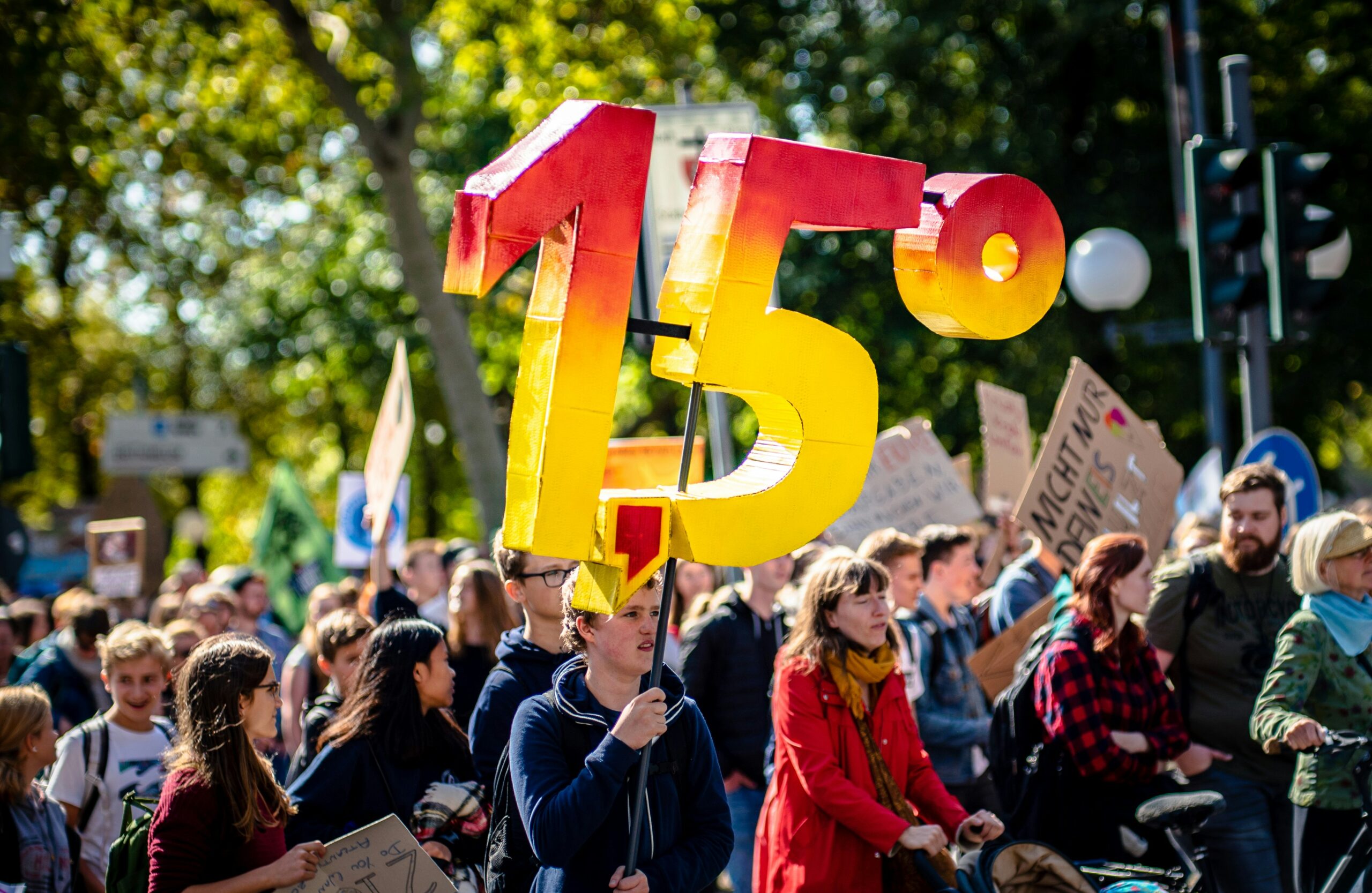Introduction to the Paris Climate Agreement
The Paris Climate Agreement represents a crucial milestone in the ongoing efforts to combat climate change on a global scale. Formulated during the 2015 United Nations Climate Change Conference, commonly known as COP21, the agreement was established with the aim of uniting countries in their pursuit of climate resilience and sustainability. By incorporating diverse perspectives and commitments, the agreement signified a cooperative approach to address the pressing challenges posed by climate change.
At its core, the Paris Agreement sets out to limit the rise in global temperatures to well below 2 degrees Celsius above pre-industrial levels, with the aspiration to pursue efforts to restrict the temperature increase to 1.5 degrees Celsius. This objective underscores the urgency of reducing greenhouse gas emissions and fostering a shift towards renewable energy sources. Signatory nations are expected to set nationally determined contributions (NDCs) that reflect their respective capabilities and circumstances, thus promoting a flexible yet robust response to climate challenges.
The significance of the Paris Climate Agreement lies not only in its ambitious goals but also in its emphasis on global solidarity. The agreement mandates that developed countries provide financial support to developing nations, aiding them in their efforts to adapt to the impacts of climate change while also transitioning to low-carbon economies. This financial mechanism promotes equity and enhances resilience among nations with varying levels of resources and capabilities.
In summary, the Paris Climate Agreement embodies a pivotal framework for international cooperation in addressing climate change. By aligning the interests of diverse countries and fostering a collaborative environment, this agreement is instrumental in steering global efforts toward a sustainable and resilient future for all. The enduring commitment of the parties involved showcases the importance of unified action in the face of climate-related challenges that affect the entire planet.
Objectives of the Paris Climate Treaty
The Paris Climate Agreement is a landmark accord that aims to address the pressing issue of climate change on a global scale. One of the primary objectives of the treaty is to limit global warming to well below 2 degrees Celsius above pre-industrial levels, with an aspiration to limit the temperature increase to 1.5 degrees Celsius. This target is crucial, as exceeding these thresholds could result in severe and potentially irreversible impacts on ecosystems, weather patterns, and sea levels. To meet this objective, nations are encouraged to submit nationally determined contributions (NDCs) that outline their specific climate action strategies and emission reduction targets.
Another significant objective of the Paris Agreement is to enhance adaptive capacities in vulnerable countries. The treaty recognizes that climate change impacts are already being felt, particularly in developing nations. Therefore, it emphasizes the need for measures that can improve resilience to climate-related shocks and stresses. This includes investing in infrastructure that can withstand extreme weather events, developing early-warning systems, and incorporating climate considerations into local governance and planning. By enhancing adaptive capacities, the Paris Agreement aims to reduce the negative impacts of climate change on human and ecological systems.
Furthermore, the Paris Agreement promotes sustainable development through its climate goals. It underscores the importance of seeking synergies between climate action and development objectives, thereby ensuring that efforts to reduce greenhouse gas emissions also contribute to economic growth and social inclusion. The treaty encourages countries to pursue low-emission development pathways that promote renewable energy, enhance energy efficiency, and support sustainable land-use practices. These interconnected objectives reflect a holistic approach to combating climate change while fostering economic prosperity and social equity.
Key Elements of the Paris Climate Agreement
The Paris Climate Agreement, adopted in December 2015, encompasses several key components aimed at mitigating climate change and its effects. A foundational element of the Agreement is the Nationally Determined Contributions (NDCs), which are individual commitments made by countries to reduce greenhouse gas emissions. Each country must submit its NDCs, which are intended to reflect their highest possible ambition, and these contributions can be updated every five years. This provision allows for progressive enhancement of commitments, fostering accountability and continual improvement in climate actions.
Another critical aspect of the Paris Agreement is the transparency framework. This framework mandates that countries regularly report on their emissions and progress toward their NDCs, ensuring transparency and enabling global assessment of collective efforts. The transparency provisions are designed to build trust among nations and help identify areas for improvement and cooperation, thus reinforcing the effectiveness of the Agreement.
Financial support to developing nations is also a vital component of the Paris Agreement. Recognizing that developing countries often bear the brunt of climate impacts despite contributing the least to the problem, the Agreement emphasizes the necessity for financial assistance. Developed countries are encouraged to provide $100 billion annually by 2020 to help developing nations implement their climate actions and bolster resilience to climate challenges. This financial mechanism not only supports climate adaptation and mitigation but also promotes sustainable development in vulnerable regions.
Lastly, the role of voluntary commitments under the Agreement cannot be overlooked. While the NDCs set the framework for required national contributions, many countries and regions may choose to go beyond their official contributions. These voluntary actions, often supported by local and regional initiatives, exemplify a commitment to climate leadership and can take diverse forms, including renewable energy projects and conservation efforts.
The Role of Major Players: Countries and Organizations
The Paris Climate Agreement, adopted in 2015, is a landmark accord that unites nations in the fight against climate change. The effectiveness of this global initiative relies heavily on the participation and commitment of major players, including key countries and influential organizations.
Among the largest contributors to global greenhouse gas emissions, the United States and China hold significant responsibility in shaping climate policies. The United States, historically the highest emitter, has fluctuated in its commitment levels, with shifts in administration influencing its engagement in the Paris Agreement. Following its withdrawal in 2020, the U.S. rejoined the accord in 2021, signaling a renewed commitment to reducing emissions and advancing climate solutions. China, the world’s largest emitter since 2006, has pledged to peak its emissions before 2030 and achieve carbon neutrality by 2060. Such commitments highlight the pivotal role that these two nations play in climate negotiations.
The European Union (EU) is another critical player, presenting a cohesive front in its climate ambition. The EU has set an ambitious target to become climate-neutral by 2050, striving to inspire global action through its Green Deal and other policies. This leadership is essential not only in terms of emission reduction but also in providing financial support and technical expertise to developing nations, reinforcing the collaborative spirit of the Paris Agreement.
Non-state actors, including non-governmental organizations (NGOs), businesses, and local governments, also contribute significantly to the goals of the Paris Agreement. These entities mobilize resources, advocate for climate action, and implement innovative solutions that enhance sustainability on various scales. Their involvement is crucial, as they often drive grassroots movements and corporate responsibility initiatives that complement governmental efforts.
Impact of the United States on the Paris Agreement
The Paris Climate Agreement, adopted in December 2015, represents a global commitment to addressing climate change through collective action. The role of the United States in this agreement has been pivotal, given its status as one of the largest greenhouse gas emitters. Historically, the U.S. was instrumental in shaping the accord’s objectives, emphasizing the need for rigorous and flexible frameworks to mitigate climate change impacts.
However, the U.S. stance on the Paris Agreement underwent significant changes with the transition from the Obama administration to the Trump administration. In June 2017, President Trump announced the United States’ withdrawal from the landmark accord, arguing that it imposed unfair economic burdens on American workers and industries. This withdrawal not only represented a setback to global climate efforts but also sent a mixed signal to other nations regarding their commitments to reducing emissions. The ensuing debate within the U.S. underscored the polarization of climate policy and the vital role the federal government plays in international agreements.
The political landscape shifted again with the election of President Biden, who prioritized rejoining the Paris Agreement as a sign of renewed U.S. commitment to tackling climate change. In early 2021, the Biden administration officially re-entered the accord, signaling a desire to enhance collaborative efforts globally. This re-engagement included a commitment to ambitious climate targets, such as reducing greenhouse gas emissions by at least 50% by 2030 compared to 2005 levels. The implications of these policy shifts reflect not just on the U.S. climate agenda but also influence international perceptions and actions regarding climate commitments worldwide. Thus, the U.S. remains a critical player in facilitating collective climate action through the Paris Agreement.
Challenges and Criticism of the Paris Climate Accord
The Paris Climate Agreement, which represents a landmark commitment by nations to combat climate change, faces significant challenges and criticism that complicate its implementation and effectiveness. One of the most pressing issues is the insufficient commitments made by many countries. While nations have put forth their Intended Nationally Determined Contributions (INDCs), these contributions often fall short of the ambitious targets required to limit global warming to well below 2 degrees Celsius, with aspirations of capping it at 1.5 degrees Celsius. This gap between pledged actions and the actual requirements to mitigate climate change raises concerns about the efficacy of the agreement.
Additionally, the issue of enforcement presents a considerable hurdle. The Paris Accord is rooted in voluntary compliance, meaning there are no binding penalties for countries that fail to meet their greenhouse gas reduction targets. This reliance on self-reporting can lead to discrepancies between stated commitments and actual progress, as nations may lack incentives to be transparent about their emissions. This lack of accountability creates a climate where the integrity of the agreement is questioned by critics who argue that without firm enforcement mechanisms, the goals set forth by the Accord may remain unachievable.
Environmental activists have voiced strong criticism regarding the overall ambition of the Paris Agreement. Many contend that the accord does not adequately address the urgency of the climate crisis, as it allows countries to craft their goals without sufficient accountability. They argue that the voluntary nature of the commitments made under the agreement is insufficient to catalyze the necessary transformative changes needed for a sustainable future. The combination of insufficient commitments, troublesome enforcement mechanisms, and critical perspectives from activists underscores the multifaceted challenges the Paris Climate Accord must overcome if it is to fulfill its promises and effectively address climate change on a global scale.
Recent Developments and Future Outlook
In recent years, significant developments have emerged regarding the Paris Climate Agreement, particularly during the Conference of the Parties (COP) meetings. COP26, held in Glasgow in 2021, was a pivotal moment where nations reaffirmed their commitment to mitigate climate change impacts and enhance their Nationally Determined Contributions (NDCs). The agreement, which seeks to limit global warming to well below 2 degrees Celsius, encourages countries to submit updated NDCs that reflect a higher level of ambition in reducing greenhouse gas emissions. As a result, several parties have introduced enhanced targets aimed at achieving net-zero emissions by mid-century, showcasing a growing responsiveness to climate science and advocacy efforts.
Furthermore, COP27, conducted in Sharm El-Sheikh in 2022, addressed crucial topics such as financing climate adaptation and loss and damage associated with climate-related events. The dialogue at this conference illustrated a shift towards a more inclusive approach, recognizing the needs of the most vulnerable nations. Commitments made during these gatherings indicate an evolving understanding of the complex nature of climate change, emphasizing shared responsibility and collaboration among all nations. This cooperation is vital as countries grapple with the stark realities of climate migration, resource scarcity, and extreme weather events, all exacerbated by global warming.
Looking toward the future, the political landscape surrounding the Paris Agreement remains dynamic. Factors such as geopolitical tensions, economic recovery initiatives post-pandemic, and the integration of climate policies into trade agreements will influence the effectiveness of the Paris framework. Nations are increasingly aware of the necessity to marry climate goals with economic growth, leading to a new discourse that advocates for sustainable development. As we navigate these uncertainties, ongoing international collaboration will be essential to refine the Paris Agreement and ensure its resilience against emerging challenges in climate science and policy.
The Role of Science and Technology in Climate Action
The Paris Climate Agreement, a landmark global commitment, relies heavily on the contributions of science and technology to achieve its ambitious climate goals. Scientific research and technological innovations present a foundation for developing effective strategies that facilitate the transition to a low-carbon economy. Among these advancements, renewable energy sources, carbon capture technologies, and sustainable agricultural practices stand out as critical solutions in mitigating climate change.
Renewable energy technologies, such as solar, wind, and hydropower, have significantly evolved in recent years. The efficiency of solar panels has increased, and the cost of wind turbines has plummeted, making clean energy more accessible and affordable than ever. These advancements not only support the aim of reducing greenhouse gas emissions but also promote energy security and job creation in various economies. Transitioning to renewable energy sources is vital in aligning national commitments with the objectives set forth in the Paris Agreement, enabling countries to meet their emissions reduction targets.
Carbon capture and storage (CCS) technologies are another essential aspect of climate action. By capturing carbon dioxide emissions from industrial processes or power plants and storing them underground, CCS helps mitigate the impact of fossil fuels on the environment. Innovations in this field, such as Direct Air Capture (DAC), are gaining momentum and showing promise as scalable solutions to further reduce atmospheric CO2 levels. These technologies can serve as a bridge in the transition towards a net-zero future, allowing for continued use of fossil fuels while minimizing their adverse effects.
Sustainable agriculture also plays a pivotal role in climate action strategies. By integrating modern farming techniques and optimizing resource management, agricultural practices can significantly reduce greenhouse gas emissions. Precision agriculture, agroforestry, and regenerative practices are examples of how technology can enhance food production while fostering resilience against climate change. These advancements ensure food security amid changing climate conditions, aligning with the broader goals of the Paris Agreement.
How Individuals Can Contribute to Climate Goals
The significance of individual contributions to climate goals cannot be overstated, particularly in the context of the Paris Climate Agreement, which aims to unite nations in combating climate change. While governmental policies play a crucial role, the collective actions of individuals can significantly augment these efforts. There are several practical steps that individuals, communities, and businesses can adopt to help meet global climate targets effectively.
One of the most impactful actions individuals can take is to reduce their carbon footprint. This can be achieved through simple lifestyle changes such as reducing energy consumption, utilizing public transport, carpooling, biking, or walking whenever possible. Additionally, opting for energy-efficient appliances and advocating for renewable energy sources in one’s community can lead to substantial decreases in greenhouse gas emissions.
Furthermore, adopting a sustainable diet, particularly one that emphasizes plant-based foods, can significantly reduce an individual’s environmental impact. The food industry is a significant contributor to carbon emissions, and making more informed dietary choices can aid in diminishing this effect. Engaging in local agricultural initiatives or supporting community gardens also fosters a sustainable food system.
Community involvement is equally essential. Participating in or initiating local environmental groups can elevate awareness and spur collective action. Individuals can advocate for climate-friendly policies by attending town meetings or engaging with local representatives, ensuring that climate priorities are addressed within their governance framework. Active participation in climate marches or educational workshops not only raises awareness but also empowers others to take sustainable actions.
Businesses too can play a pivotal role, as they have the capacity to implement practices that align with climate goals. Individuals can support companies with strong environmental commitments and encourage corporate responsibility. By turning eco-friendly practices into a cultural standard, collective efforts can significantly contribute to the overarching objectives of the Paris Agreement.



